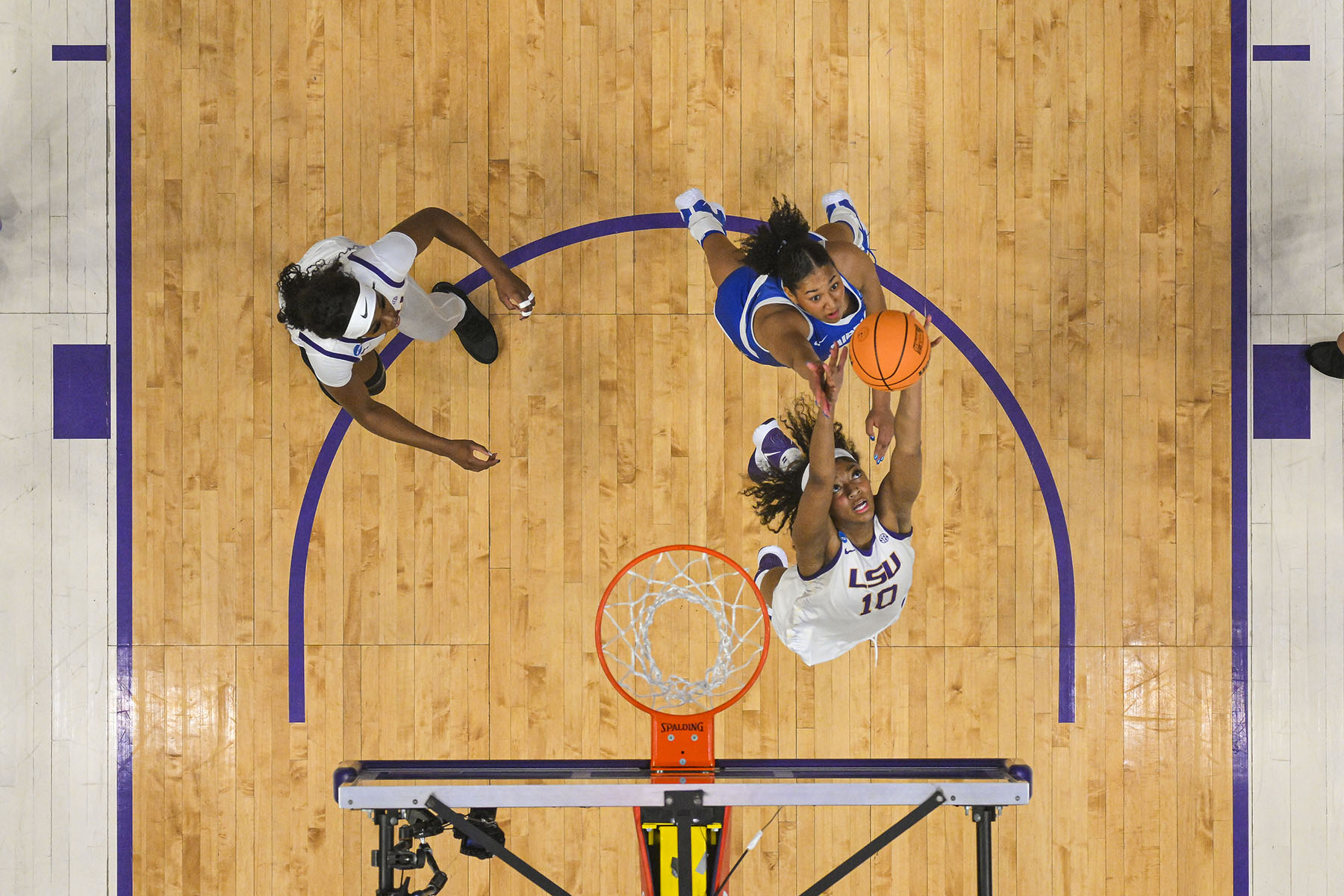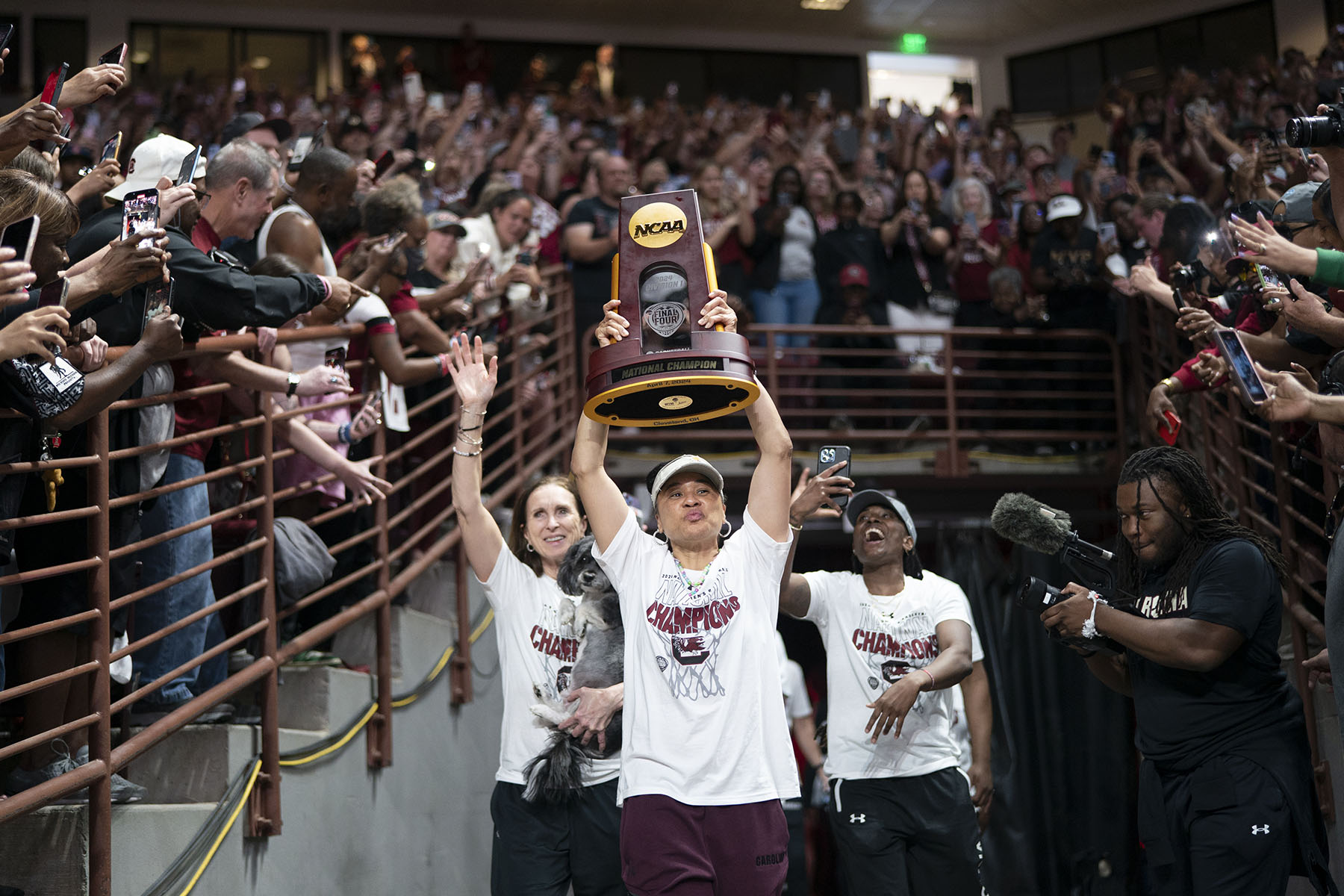This column first appeared in The Amendment, a biweekly newsletter by Errin Haines, The 19th’s editor-at-large. Subscribe today to get early access to future analysis.
Call it The Year of the Woman for college basketball.
This week, an average of 18.9 million viewers tuned in to watch the women’s NCAA championship game, setting a record and eclipsing the ratings for the men’s championship for the first time in tournament history. (See what I did there?) The tournament also set records for attendance. More than half a century after the landmark Title IX legislation clearing the way for gender equity in college sports, the women’s game is having a hard-fought, well-deserved moment.
Electoral politics has had multiple “years of the woman,” the first coming in 1992. The path for that representation was cleared by the 19th Amendment to the Constitution. In the years that followed its passage in 1920, more women cast ballots and ran for office, breaking barriers at every level of government. The Voting Rights Act of 1965 cleared the way for voters of color, who were in turn able to elect more candidates who shared their lived experiences and identities. The Americans with Disabilities Act, passed in 1990, demanded full and equal access to the ballot for voters with disabilities.
Whether in our sports or our democracy, we know there is a correlation between the ability for historically marginalized people to participate and Americans’ ability to normalize their leadership in public life. And the increased visibility of women can often lead to excitement and enthusiasm when they are in roles from which they were previously excluded.
Everyone, it seems, is watching women win. It wasn’t always this way.
-
Listen To The Amendment Podcast:
-
Listen To The Amendment Podcast: The Amendment: Everyone Watches Women’s Sports with Jemele Hill
South Carolina Gamecocks Coach Dawn Staley, who guided her team to its third championship in seven years on Monday night, has had a career that has mirrored — and that has also shaped — the evolution of the sport and its growing popularity. Her nickname in high school was “Title IX,” a nod to the promise of the policy made real through her talent on the court.
Staley didn’t win a championship as a player at the University of Virginia; there were no lucrative Name, Image and Likeness (NIL) deals for student athletes then, either. The WNBA was still five years away when she graduated.
When Staley arrived at South Carolina in 2008, the team’s average attendance that season was 2,793 — up 992 from the previous season and the seventh highest attendance in the country at the time. This season, the undefeated team had an NCAA-leading average attendance of 16,067.

Just a few years after poor marketing and unequal facilities were making headlines during March Madness, the women’s game is dominant, backed with institutional resources, coverage of compelling storylines, and equal billing at the tournament. The result? A women’s game that this season arguably found even more fans of all genders.
But the bigger stage also came with criticism, tinged with racism and misogyny.
Sports journalist Jemele Hill points to comments about LSU’s Angel Reese during her college career, casting her as a villain.
“I think for a lot of people, it’s uncomfortable to see women in these positions. … They’re not doing anything that we don’t celebrate men for,” Hill told me for the latest episode of the Amendment podcast. When men talk trash and are demonstrative, she said, they get celebrated. “It’s funny. It becomes a meme.”
After losing in the Final Four, Reese talked about her experience in an emotional press conference and days later announced in a Vogue photo shoot that she would enter the 2024 WNBA draft. Reese is a sign of the sport’s growing popularity, with NIL deals that put her in the top 10 earners of all college athletes.
It’s a moment made possible because of years of struggle and sacrifice that happened far from the spotlight, by women and other supporters of the game, both on and off the court.
Imagine the same investment for women’s participation in our democracy, from donors, political parties and voters. Where would our politics be at the end of an election season? Championing women in a way that allows them to compete fairly is a win for society.








